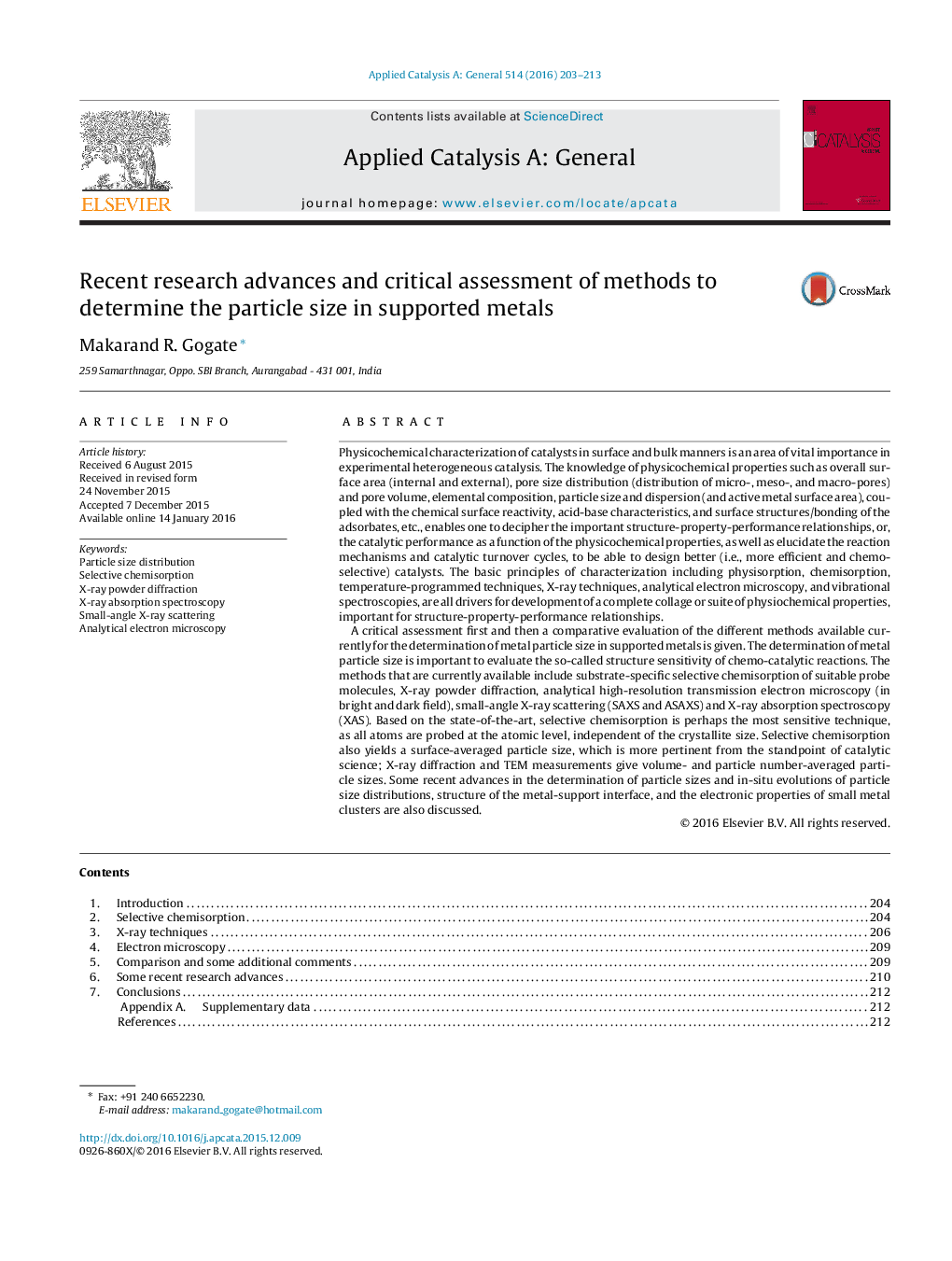| کد مقاله | کد نشریه | سال انتشار | مقاله انگلیسی | نسخه تمام متن |
|---|---|---|---|---|
| 38956 | 45798 | 2016 | 11 صفحه PDF | دانلود رایگان |
• Techniques for physicochemical characterization of catalysts are first briefly reviewed.
• Three techniques for evaluation of particle size; selective chemisorption, XRD, and TEM, are discussed.
• A comparison of the advantages and short-comings of the three techniques is then given.
• Case studies are provided that shed further light on the comparative evaluation.
• Recent research advances in these areas are covered.
Physicochemical characterization of catalysts in surface and bulk manners is an area of vital importance in experimental heterogeneous catalysis. The knowledge of physicochemical properties such as overall surface area (internal and external), pore size distribution (distribution of micro-, meso-, and macro-pores) and pore volume, elemental composition, particle size and dispersion (and active metal surface area), coupled with the chemical surface reactivity, acid-base characteristics, and surface structures/bonding of the adsorbates, etc., enables one to decipher the important structure-property-performance relationships, or, the catalytic performance as a function of the physicochemical properties, as well as elucidate the reaction mechanisms and catalytic turnover cycles, to be able to design better (i.e., more efficient and chemo-selective) catalysts. The basic principles of characterization including physisorption, chemisorption, temperature-programmed techniques, X-ray techniques, analytical electron microscopy, and vibrational spectroscopies, are all drivers for development of a complete collage or suite of physiochemical properties, important for structure-property-performance relationships.A critical assessment first and then a comparative evaluation of the different methods available currently for the determination of metal particle size in supported metals is given. The determination of metal particle size is important to evaluate the so-called structure sensitivity of chemo-catalytic reactions. The methods that are currently available include substrate-specific selective chemisorption of suitable probe molecules, X-ray powder diffraction, analytical high-resolution transmission electron microscopy (in bright and dark field), small-angle X-ray scattering (SAXS and ASAXS) and X-ray absorption spectroscopy (XAS). Based on the state-of-the-art, selective chemisorption is perhaps the most sensitive technique, as all atoms are probed at the atomic level, independent of the crystallite size. Selective chemisorption also yields a surface-averaged particle size, which is more pertinent from the standpoint of catalytic science; X-ray diffraction and TEM measurements give volume- and particle number-averaged particle sizes. Some recent advances in the determination of particle sizes and in-situ evolutions of particle size distributions, structure of the metal-support interface, and the electronic properties of small metal clusters are also discussed.
Figure optionsDownload high-quality image (247 K)Download as PowerPoint slide
Journal: Applied Catalysis A: General - Volume 514, 25 March 2016, Pages 203–213
